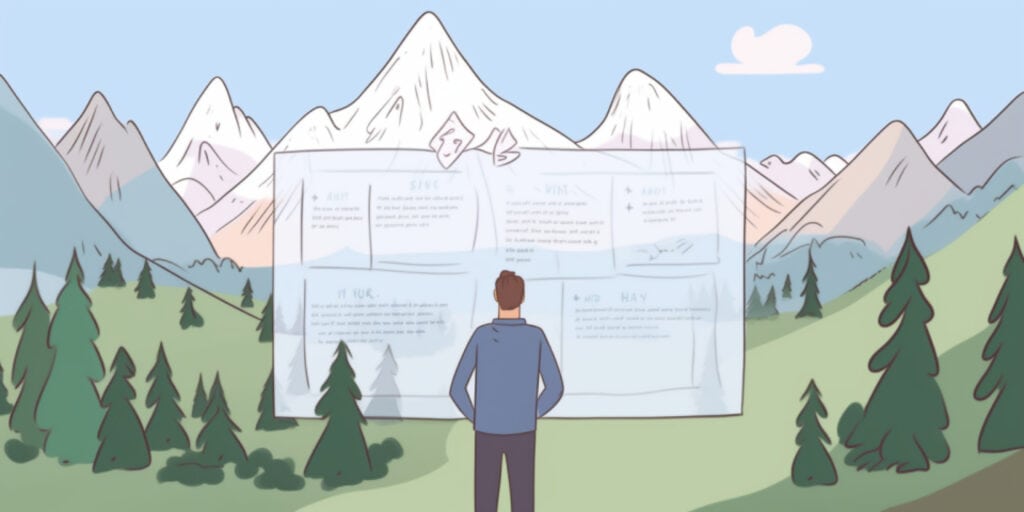Feeling overwhelmed, anxious, and stressed out in a high-pressure environment is a common experience. Whether you’re working a demanding job, studying for exams, or dealing with personal issues, stress can take a toll on your mental and physical health.
But the good news is that there are steps you can take to reduce your stress levels and take back control of your life. In this article, we’ll explore some practical tips and strategies for managing stress in a stressful environment.
Some effective ways to reduce stress in a stressful environment include practicing deep breathing, taking breaks and going for a walk, practicing mindfulness and meditation, organizing your workspace, seeking support from coworkers or a therapist, and setting boundaries to manage your workload. It’s important to prioritize self-care and find what works best for you in managing stress.
You may feel like you’re stuck in a never-ending cycle of stress and exhaustion, but it’s important to remember that you have the power to change your situation. By making small changes to your daily habits and mindset, you can create a more peaceful and fulfilling life.
Whether you’re looking for ways to manage your stress on a daily basis or seeking long-term solutions, this article will provide you with the tools and guidance you need to reduce stress and find freedom in your life.
Identify the Causes of Your Stress
You’re feeling overwhelmed and it’s important to understand what’s causing it so you can start taking control of your situation. The first step in reducing stress is to identify triggers. Take a step back and analyze what’s been causing you stress. Is it your workload? Your coworkers? Your boss?
Once you’ve identified the root cause of your stress, you can start to take action. If you’re struggling to identify the cause of your stress, seek help. Talk to a friend or family member, or even a professional therapist. Sometimes, it can be difficult to see things objectively when you’re in the midst of a stressful situation.
Getting an outside perspective can help you better understand what’s causing your stress and how to deal with it. In order to reduce stress in a stressful environment, it’s important to identify the triggers and seek help if needed. Once you’ve identified what’s causing your stress, you can start taking action to reduce it.
The next step is to practice mindfulness, which will help you stay present and calm in the face of stress.

Practice Mindfulness
When you’re feeling overwhelmed by stress, practicing mindfulness can help you find some relief. By taking breaks throughout the day, you allow yourself time to recharge and refocus.
You can also use breathing techniques to relax your mind and body, and practicing meditation can help you develop a greater sense of calm and presence.
By incorporating these techniques into your daily routine, you can better manage stress and improve your overall well-being.
Take Breaks Throughout the Day
Make sure to take a few short breaks during your busy day to recharge and prevent burnout. Taking breaks has numerous benefits, including increased productivity, improved focus, and reduced stress levels. It may seem counterintuitive, but taking breaks throughout the day can actually help you get more done in less time.
When you take a break, you give yourself a chance to step back, clear your mind, and come back to your work with renewed energy and focus. To get the most benefit from your breaks, it’s important to have a strategy for scheduling them.
One effective strategy is the Pomodoro technique, which involves working for 25 minutes and then taking a 5-minute break. After four Pomodoros, take a longer break of 15-30 minutes. Another strategy is to schedule breaks around natural breaks in your work, such as after finishing a project or completing a task. Whatever strategy you choose, make sure to stick to it consistently to reap the benefits of taking breaks.
Taking breaks throughout the day is just one way to reduce stress in a stressful environment. Another effective technique is to use breathing techniques to relax.
Use Breathing Techniques to Relax
Using breathing techniques can help you feel more relaxed and centered, improving your overall well-being. When you’re feeling stressed, your breathing can become shallow and rapid, which can exacerbate feelings of anxiety and tension. By taking deep, intentional breaths, you can slow down your heart rate and calm your mind.
Here are some breathing techniques you can use to reduce stress:
- Diaphragmatic breathing: This technique involves breathing deeply into your belly, rather than shallowly into your chest. Place one hand on your stomach and one hand on your chest, and breathe in through your nose for a count of four. Feel your stomach expand as you inhale, and then exhale slowly through your mouth for a count of six.
- Box breathing: With this technique, you inhale for a count of four, hold your breath for a count of four, exhale for a count of four, and then hold your breath again for a count of four. Repeat this pattern for a few minutes, focusing on the sensation of your breath moving in and out of your body.
- Alternate nostril breathing: This technique involves using your fingers to close one nostril while you inhale through the other nostril. Then, switch nostrils and exhale through the opposite nostril. Repeat this pattern several times, focusing on the sensation of air moving through your nostrils.
- Progressive relaxation: This technique involves tensing and then relaxing different muscle groups in your body. Start by tensing your feet for a few seconds, and then releasing the tension and relaxing your feet. Move up your body, tensing and relaxing your calves, thighs, stomach, chest, arms, and face.
By incorporating breathing techniques into your daily routine, you can reduce stress and improve your overall sense of well-being. Practicing meditation can also be a helpful tool to further enhance your relaxation techniques.
Practice Meditation
If you’re looking for a way to center your mind and connect with your inner self, practicing meditation is a great option. Meditation has been proven to reduce stress, improve focus, and boost overall well-being. There are countless benefits of meditation, including better sleep, increased self-awareness, and reduced anxiety. By incorporating meditation into your daily routine, you can create a sense of calm in even the most stressful environments.
There are many different meditation techniques to choose from, each offering its own unique benefits. One popular technique is mindfulness meditation, which involves focusing on the present moment without judgment. Another technique is transcendental meditation, which involves repeating a mantra to achieve a deep sense of relaxation. Regardless of which technique you choose, the important thing is to make meditation a regular practice. By taking the time to meditate each day, you can reduce stress and improve your overall health and well-being. As you continue to prioritize your mental health, consider incorporating regular exercise into your routine for even greater benefits.

Exercise Regularly
If you’re looking to reduce stress and improve your overall well-being, regular exercise is a great place to start.
Finding an exercise routine that works for you can be a challenge, but it’s important to keep trying until you find something that you enjoy and that fits into your schedule.
Additionally, incorporating movement into your workday can help you stay active and energized throughout the day.
Find an Exercise Routine That Works for You
Discover an exercise routine that suits your needs and preferences to keep yourself feeling good and energized throughout the day. Whether you prefer partner workouts or working out alone, finding a routine that works for you is crucial to reducing stress in a stressful environment.
Consider setting up a home gym if you have the space and resources, or explore different gym options in your area. Some people prefer running or hiking outdoors, while others prefer yoga or dance classes. Whatever your preference, make sure to schedule regular workouts into your week and stick to them.
It’s important to remember that exercise isn’t a one-size-fits-all solution. What works for one person may not work for another. Be patient and open-minded as you explore different options and find what works best for you.
Incorporating regular exercise into your routine can be a game-changer in terms of reducing stress and improving overall well-being. In the next section, we’ll discuss how you can incorporate movement into your workday.
Incorporate Movement Into Your Workday
Get ready to learn how to incorporate movement into your workday and improve your overall well-being. Sitting at a desk for long periods can cause physical and mental stress. Incorporating movement throughout your day can help alleviate stress, reduce muscle tension, and boost productivity.
Desk exercises, such as neck and shoulder stretches, or walking meetings with colleagues are great ways to get your blood flowing. If possible, consider using a standing desk to help reduce sedentary behavior.
In addition to incorporating movement, there are other ways to reduce stress in a stressful environment. Aromatherapy, time management techniques, and prioritizing self-care can all help reduce feelings of stress and anxiety. By taking care of yourself, you can better manage the demands of your workday.

Prioritize Self-Care
Take care of yourself first by setting aside time for activities that make you feel relaxed and rejuvenated, like going for a walk or practicing yoga. Self-care practices are essential to reduce stress in a stressful environment. Creating a self-care routine for yourself can help you stay grounded and reduce anxiety.
Here are some ideas and benefits of self-care practices that you can incorporate into your daily routine:
- Take a relaxing bath with essential oils and some candles to create a calming atmosphere.
- Listen to your favorite music or podcast while taking a break from work to help you disconnect and recharge.
- Write in a journal to release your thoughts and emotions, which can help you gain clarity and perspective.
- Practice mindfulness meditation to help you stay present and focused, which can reduce stress and anxiety levels.
Remember, self-care is not selfish; it’s necessary to take care of your well-being. Putting yourself first can help you show up better for others and increase your productivity. By incorporating self-care practices into your daily routine, you can reduce stress levels and improve your overall quality of life.
To further reduce stress in a stressful environment, it’s crucial to set realistic goals. Challenging yourself is essential, but setting unrealistic goals can lead to burnout and increased stress levels. By setting achievable goals, you can stay motivated and focused while reducing stress levels.

Set Realistic Goals
In order to avoid burnout and increase motivation, it’s important to set achievable goals for yourself in a challenging work environment. Realistic goal setting involves breaking down larger goals into smaller, achievable targets.
For example, if you’re a teacher, setting a goal to grade one extra assignment per day can lead to a sense of accomplishment and reduced overwhelm. It’s important to keep in mind that realistic goals should still be challenging enough to motivate you, but not so difficult that they are unattainable.
By setting achievable goals, you’re able to measure progress and celebrate small victories along the way. This can help you stay motivated while still managing the demands of a stressful work environment.
When setting goals, make sure to prioritize the most important tasks first and avoid overcommitting. This means being honest with yourself about what you can realistically accomplish within a given timeframe.
Remember that setting achievable goals is not a one-time event, but an ongoing process. As you progress and achieve smaller goals, you can adjust your larger goals accordingly. The key is to stay flexible and adaptable, while still maintaining a sense of purpose and direction.
In the next section, we’ll explore how learning to say no can help you manage the demands of a stressful work environment.

Learn to Say No
When trying to reduce stress in a stressful environment, it’s important to learn to say no. Setting boundaries when necessary can help prevent overwhelming workloads and demanding schedules.
Prioritizing your workload also helps to ensure that you’re not taking on more than you can handle. Remember that it’s okay to say no and prioritize your own well-being.
Set Boundaries When Necessary
Sometimes, it can be difficult to set boundaries at work, especially when you feel like you have to constantly prove yourself or meet high expectations. However, establishing boundaries is crucial for reducing stress in a stressful environment.
Communication strategies can help you set clear boundaries with your colleagues and managers, such as letting them know when you’re not available or delegating tasks that aren’t in your job description.
In addition to communication strategies, time management tips can also help you set and maintain boundaries. Prioritizing your workload and setting realistic goals for each day can help you avoid overworking and feeling overwhelmed.
Remember, it’s okay to say no to extra tasks or projects that don’t align with your priorities or goals. By setting boundaries and managing your time effectively, you can reduce stress and feel more in control of your work environment.
Prioritize Your Workload
Now that you’ve established boundaries in your workplace, it’s time to focus on prioritizing your workload. One of the most common causes of stress in a stressful environment is feeling overwhelmed by tasks that seem insurmountable. This is why time management and task delegation are crucial skills to master.
To effectively manage your time, start by creating a to-do list and ranking your tasks in order of importance. Identify which tasks are urgent and require immediate attention and which ones can wait. Once you have a clear understanding of what needs to be done, create a schedule that allows you to focus on one task at a time without feeling rushed or pressured.
Additionally, consider delegating tasks to colleagues who have the necessary skills and experience. This not only helps you manage your workload more efficiently, but it also fosters a sense of teamwork and collaboration in the workplace.
Remember, prioritizing your workload is not about working harder, but working smarter. By managing your time effectively and delegating tasks when necessary, you can reduce stress and increase productivity.
In the next section, we’ll discuss how seeking support can also help you manage stress in a stressful environment.

Seek Support
You can find help and guidance by reaching out to others who may have experienced similar challenges before, and studies have shown that seeking social support can significantly improve your mental and emotional wellbeing. Here are four effective ways of seeking support in a stressful environment:
- Talk to a trusted friend or family member. Simply venting your frustrations and concerns can be a great way to reduce stress and gain some perspective on your situation.
- Seek out a mentor or coach. A mentor or coach can provide you with valuable insights and guidance on how to navigate your stressful environment. They can also help you develop effective coping strategies and provide you with the motivation to keep moving forward.
- Join a support group. Support groups are a great way to connect with others who are going through similar challenges. They provide a safe and supportive environment where you can share your experiences, learn from others, and gain a sense of belonging.
- Consider seeking professional counseling. A qualified therapist can help you develop a deeper understanding of your stressors and provide you with the tools and techniques to manage them effectively.
Remember, seeking support is not a sign of weakness but a sign of strength. It takes courage and vulnerability to reach out for help, but doing so can help you reduce your stress levels and improve your overall wellbeing.
By taking the time to prioritize your mental and emotional health, you will be better equipped to handle the challenges that come your way.
As you seek support in a stressful environment, it’s important to keep in mind the importance of communication and the types of support that are available to you. Whether you choose to talk to a friend, seek out a mentor, join a support group, or see a therapist, the key is to find a supportive community of people who understand what you’re going through and can help you navigate your challenges.
By taking control of your environment and seeking support from those around you, you can begin to reduce your stress levels and feel more empowered to take on the challenges that come your way. So take the time to reach out, connect with others, and prioritize your mental and emotional wellbeing – it’s the first step towards a happier, more fulfilling life.

Take Control of Your Environment
To take control of your surroundings and feel more empowered, focus on making small changes that positively impact your daily routine. One way to do this is by maximizing productivity. This may mean organizing your tasks in a more efficient way, setting specific goals for yourself, or utilizing tools and technology to streamline your workflow. By taking control of your workload, you’ll feel more in control of your environment and less overwhelmed by the stressors around you.
Another way to take control of your environment is by creating a calming workspace. This may include decluttering your desk, adding plants or other natural elements, or adjusting lighting and temperature to your preferences. By creating a space that feels more peaceful and in line with your personal preferences, you’ll be able to reduce stress and increase focus.
Remember, taking control of your environment doesn’t have to be a daunting task. Start by making small changes that you know will have a positive impact on your daily routine. By doing so, you’ll feel more empowered to tackle the stressors in your life and create a more positive mindset. In the next section, we’ll explore how practicing positive thinking can further reduce stress and improve your overall well-being.

Practice Positive Thinking
Pump up positivity in your life by practicing proactive and productive thinking. Start by practicing positive affirmations and repeating mantras that inspire you. These affirmations can help you shift your focus from negative thoughts to positive ones.
Try to incorporate gratitude practice into your daily routine. When you focus on the things you’re grateful for, it becomes easier to see the positives in your life.
It’s important to understand that positive thinking isn’t about ignoring reality. It’s about choosing to focus on what you can control and finding solutions to the things that are causing you stress. When you practice positive thinking, you become more resilient and better equipped to handle stress. Remember, it’s not what happens to you that matters, it’s how you react to it.
Practicing positive thinking takes time and effort, but the benefits are worth it. Start by incorporating small changes into your daily routine, such as repeating positive affirmations or writing down things you’re grateful for. With practice, positive thinking will become a habit, and you’ll notice a positive change in your mindset.
Next, regularly evaluate your progress and adjust your approach as needed. By practicing positive thinking, you can reduce stress and live a more fulfilling life.

Regularly Evaluate Your Progress
Regularly evaluate your progress and adjust your approach as needed to continue improving your positive thinking habits.
Regular evaluation can help you determine how effective your current practices are and identify areas that need improvement. Evaluating yourself can be difficult, but it’s essential to maintaining progress.
One of the benefits of evaluation is that it can help you stay motivated. When you see that your efforts are paying off, you’re more likely to continue with them. Evaluation can also help you identify when you need to change your approach. For example, if you find that you’re not making progress with a particular positive thinking technique, you can try something else. This can prevent you from becoming discouraged and giving up on your efforts to reduce stress.
To effectively evaluate your progress, consider keeping a journal or using a mood-tracking app. Take note of how you feel throughout the day and what activities or thoughts contribute to your stress levels. This can help you identify patterns and make changes accordingly.
Additionally, seek feedback from trusted friends or family members who can provide an objective perspective on your progress. Remember, evaluation isn’t about being critical of yourself, but rather about finding ways to improve your well-being.

What Techniques Can I Use to Reduce Stress in a Stressful Environment?
When handling stressful environments, it’s important to practice deep breathing, mindfulness, and time management techniques. Taking short breaks, staying organized, and seeking support from colleagues can also help reduce stress. Prioritizing tasks and setting boundaries can create a healthier work environment.
Can Implementing Relaxation Techniques Help Reduce Stress in a Stressful Environment?
In a stressful environment, implementing techniques for stress relief can make a significant difference. Relaxation techniques such as deep breathing, meditation, and mindfulness can effectively reduce stress levels. By incorporating these practices into your daily routine, you can better manage the pressures of a high-stress environment and experience improved overall well-being.
Can Creating a Relaxing Environment Help Reduce Stress in a Stressful Environment?
Creating a calming space in a stressful environment can help reduce stress significantly. By incorporating soothing elements such as soft lighting, comfortable seating, and nature-inspired decor, individuals can find respite from the chaos. This simple act of intentionally creating a peaceful atmosphere can work wonders for stress reduction.
Can I Reduce Stress in a Stressful Environment by Improving My Sleeping Habits?
Improving your sleeping habits can greatly contribute to reducing stress in a stressful environment. The benefits of sleep relaxation include lowering cortisol levels and improving overall mental well-being. Establishing a consistent sleep routine and creating a calming sleep environment can have a significant impact on stress management.
Conclusion
Congratulations! You now have the tools to reduce stress in your stressful environment.
By identifying the causes of your stress, practicing mindfulness, exercising regularly, prioritizing self-care, setting realistic goals, seeking support, taking control of your environment, and practicing positive thinking, you can make a significant difference in your stress levels.
Remember, reducing stress is a journey, not a destination. Just like a gardener who must continually tend to their plants to ensure they grow strong and healthy, you must continually tend to your stress levels to ensure they stay low.
It may not be easy, but with time and effort, you can create a stress-free oasis in even the most stressful environments.
In conclusion, reducing stress is like taking care of a delicate flower. You must nurture it, protect it, and give it the right environment to flourish.
With each step you take towards reducing your stress levels, you are planting a seed of self-care that will grow into a beautiful, vibrant, and stress-free life.
So take the first step today and start reducing your stress levels. You deserve it!




